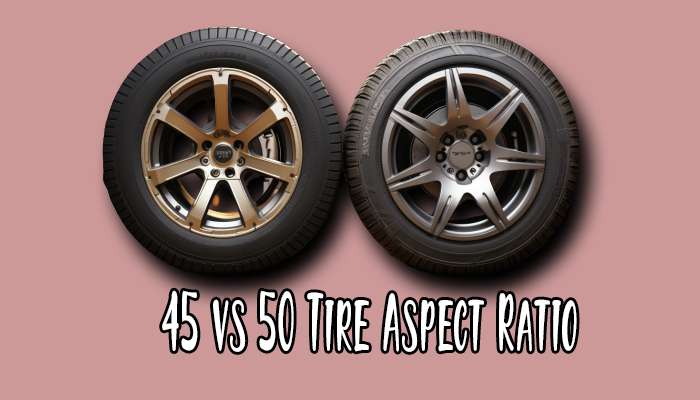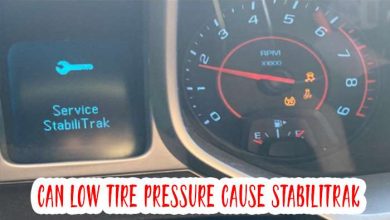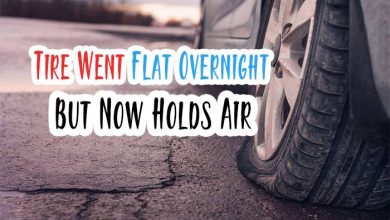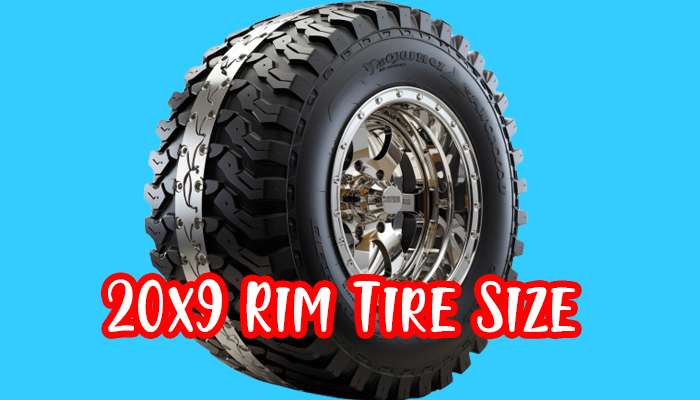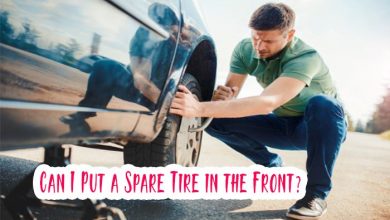You Should Not Drive On a Flat Tire! Here Is Why?
As a seasoned tire enthusiast, my journey through the diverse rubber and rims landscape has been thrilling.
Today, let’s embark on a quest to demystify a difficulty that often leaves drivers bewildered: Can you drive on a flat tire?
Strap in as we navigate the intricate mechanics of tires, unveiling the truth behind this commonly encountered vehicular puzzle. Read More: How Temperature Can Affect Your Tire Pressure?
No, you should not drive on a flat tire. While it’s technically possible to drive a short distance on a flat tire, it’s extremely dangerous and can cause significant damage to your vehicle.
Causes of Flat Tires
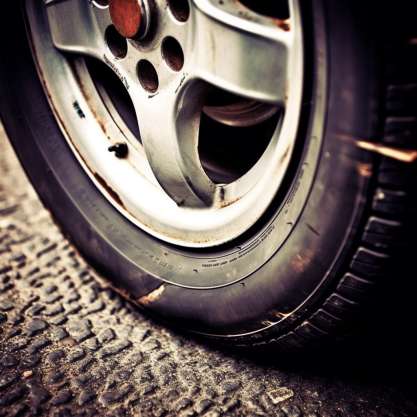
Before we hit the road, let’s understand what brings our tires to a screeching halt.
1. Puncture Prowess
In the world of tires, punctures are the unsolicited adversaries that can turn a smooth ride into a bumpy ordeal.
Picture this: an innocuous-looking nail, a sliver of glass, or a defiant screw—each capable of transforming your tire from a reliable companion to a victim of puncture warfare.
2. Under Pressure: Literally
Tires thrive on the delicate balance of pressure within. Yet, when someone disrupts this equilibrium, trouble brews.
Whether it’s a gradual leak or a sudden loss of pressure, underinflated tires compromise performance and jeopardize the structural integrity that keeps your journey smooth.
3. Sidewall Struggles
The often-overlooked sidewalls of your tires play a pivotal role in maintaining their robust form.
However, a forceful encounter with a curb or a pothole can translate into delayed damage, eventually leading to a flat tire.
Signs of a Flat Tire
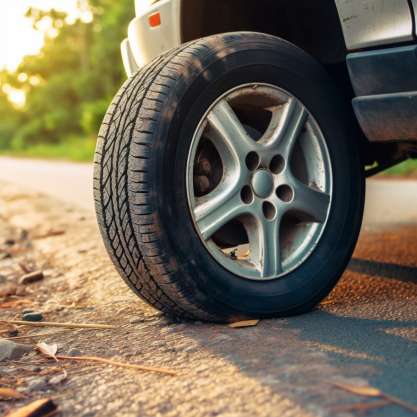
Detecting a flat tire early can save you from a bumpy ride. Keep an eye out for these signals:
1. The Dreaded Hiss
As any experienced driver will attest, an unmistakable sound heralds the discovery of a flat tire—the dreaded hiss of escaping air.
If you step out of your vehicle only to be met with this audible distress signal, your tire will likely need immediate attention.
2. The Tilted Tango
Engage in a visual inspection by standing in front of and behind your vehicle. If one tire appears noticeably lower than its counterparts, you’re engaged in the tilted tango of a flat tire.
3. Vibrations: Not the Good Kind
Imagine cruising down the road, and suddenly, your vehicle begins to dance to an unusual rhythm.
These unexpected vibrations or wobbling sensations are not the good kind—they’re indicators of an imbalance caused by a flat tire, demanding your prompt investigation.
Can You Drive on a Flat Tire?
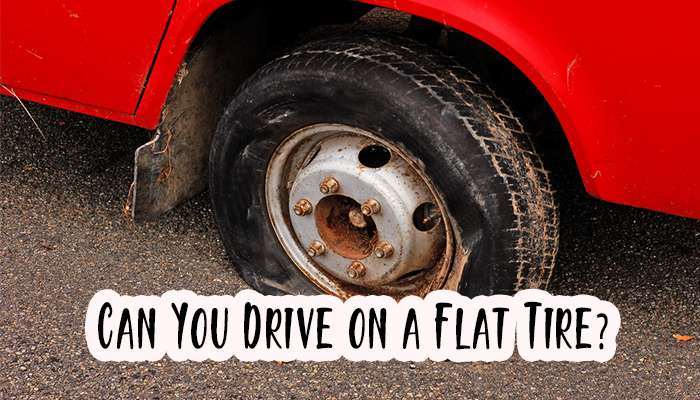
Can You Drive on a Flat Tire? No, it would help if you did not drive on a flat tire. Doing so is extremely dangerous and can cause significant damage to your car.
Read Further: Are Toyo Tires Good?
Here are some reasons why you should never go on a flat tire:
1. Safety risks:
- Loss of control: A flat tire can cause your car to pull to one side, making it difficult to steer and increasing the risk of an accident.
- Blowout: A flat tire is more likely to blow out at high speeds, which can cause you to lose control of your car.
- Skidding: A flat tire can make your car more likely to skid on wet or slippery surfaces.
2. Damage to your car:
- Rim damage: Driving on a flat tire can damage the rim of your wheel. This can be expensive to repair.
- Tire damage: Driving on a flat tire can ruin the tire beyond repair.
- Suspension damage: Driving on a flat tire can damage your car’s suspension system.
3. What to do if you have a flat tire:
- Pull over to a safe place.
- Turn on your hazard lights.
- Change the tire if you can.
- If you can’t change the tire, call a tow truck.
Here are some additional tips for dealing with a flat tire:
- Keep a spare tire and jack in your car.
- Check your tire pressure regularly.
- Don’t drive on a tire that is low on air.
- Be aware of the road conditions.
If you do have to drive on a flat tire for a short distance, go slowly and avoid making any sudden turns or stops.
However, it is always best to avoid driving on a flat tire if possible.
Risks of Driving on a Flat Tire
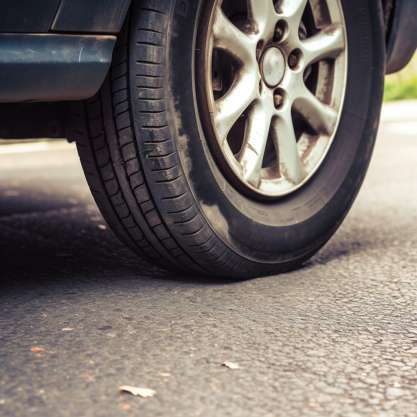
1. Rim Ruin
Driving on a flat tire is a difficult journey for your rim. Potholes and debris become formidable adversaries, capable of transforming your once-pristine edge into a battered relic, echoing the challenges faced on the road.
2. Handling Headaches
The dynamics of your vehicle’s handling take a hit when navigating the road on a flat tire.
Steering becomes unpredictable, and maintaining control becomes an uphill battle, especially when cruising at higher speeds.
3. Tread Tear
Persisting in driving on a flat tire is a recipe for disaster. The continued friction can mercilessly shred what remains of the tread, rendering your tire bald and functionally useless.
This jeopardises your safety and necessitates an inevitable and often expensive tire replacement.
Safety Tips for Driving on a Flat Tire
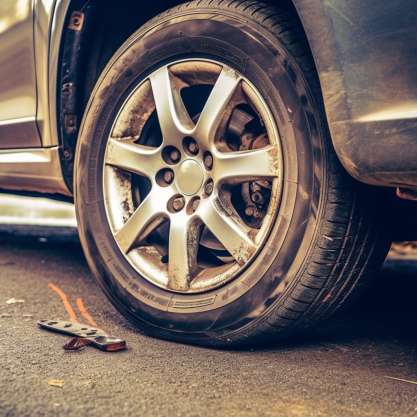
1. Reduce Speed, Increase Caution
If circumstances force you into the realm of driving on a flat tire, the first rule is to slow down.
Reduced speeds enhance your ability to maintain control and minimize the risk of accidents resulting from compromised stability.
2. Steady as She Goes
Maintaining a firm grip on the steering wheel becomes paramount when traversing the road on a flat tire.
The erratic handling demands your attention, urging you to avoid sudden movements and maintain a steady course.
3. Hazard Lights: Not Just for Show
In the theatre of a flat tire, your hazard lights take centre stage. Activating them is a beacon, alerting fellow drivers to your vehicular predicament.
This simple step enhances visibility and significantly reduces the likelihood of collisions.
What to Do if You Decide to Drive on a Flat Tire?
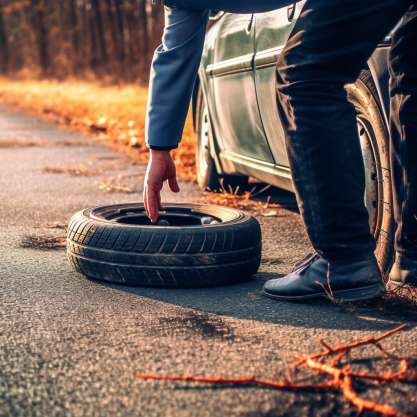
1. Pit Stop Precautions
Conduct a thorough pit stop inspection before embarking on your journey with a flat tire.
Ensure no foreign objects are lodged in the tire, exacerbating the issue and potentially causing further damage.
2. Tire Pressure Tidbits
If you have a portable air compressor, attempt to inflate the tire to a reasonable pressure.
While this is a temporary fix, it can provide more stability during your drive, reducing the risk of additional complications.
3. Destination Dilemma
Driving on a flat tire should always be a last resort. Head to the nearest service station or seek professional assistance.
Equipped to address your vehicular woes, these experts prevent further harm and ensure a more permanent solution to your flat tire predicament.
Alternatives to Driving on a Flat Tire
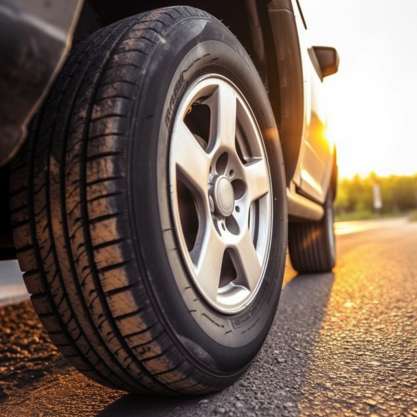
1. Spare Solutions
A prepared driver is a confident driver. Equip your vehicle with a spare tire and the necessary tools for a quick tire change.
While changing a flat tire might not be everyone’s cup of tea, acquiring this skill proves invaluable during emergencies.
2. Towing Triumph
When in doubt, it’s always wise to call for a tow. Professional towing services are a reliable lifeline, ensuring your vehicle reaches its destination without further harm.
This not only spares you from the perils of driving on a flat but also provides a comprehensive solution to your vehicular woes.
Conclusion
In the expansive realm of tires, navigating the terrain of a flat is indeed a challenge, but not an impossible one.
As we conclude this journey, I invite you to share your own experiences and solutions in the comments below.
Let’s build a community of informed drivers ready to face the unexpected twists and turns of the road, armed with knowledge about the perplexing world of flat tires.
Glossary
- Puncture Prowess: The vulnerability of tires to sharp objects causing punctures.
- Sidewall Struggles: Challenges faced by tire sidewalls, often due to collisions.
- The Tilted Tango: Visual inspection for a flat tire, observing uneven heights.
- Rim Ramifications: Consequences of driving on a flat tire on the wheel rim.
- Tread Tear: The deterioration of tire tread compromises safety.
- Pit Stop Precautions: Necessary steps before going on a flat tire, including visual checks.
- Tire Pressure Tidbits: Tips for using a portable air compressor to inflate a flat tire temporarily.
